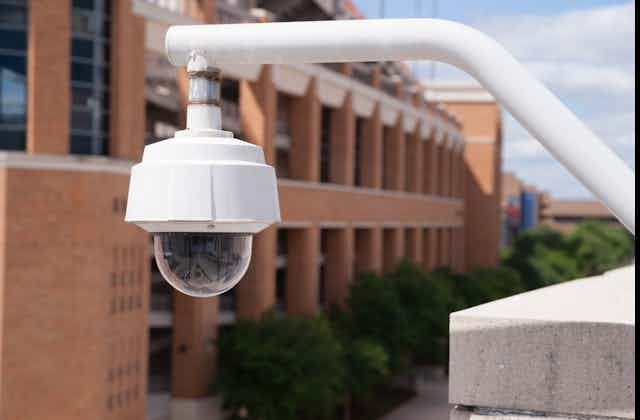The excitement of entering a new academic year for university and college students can be palpable and filled with hope. But the start of the school year in post-secondary settings also has a shadow side, known as the red zone.
The red zone is one of the riskier times for gender-based and sexualized violence to occur — about 50 per cent of sexual assaults on campus happen during this period. The impact on victims can be tremendous and devastating.
Others on campus are left to worry about their personal safety, while families and friends become concerned about their loved ones being on campus grounds or attending campus events.
After an incident of violence occurs, universities and colleges start thinking about reputational harm and what impact this might have on enrolment in the long-term.
Institutional betrayal
The post-secondary environment is a unique community focused on teaching and learning. Education should be at the heart of these learning environments, but this is affected after on-campus incidents of assault.
Victims have expressed feelings that an assault forces them to the margins of these communities. They experience institutional betrayal when their university or college failed to have policies or measures that would ensure their safety and failed to do what was reasonably expected to prevent further violence.
Read more: When sexual assault victims speak out, their institutions often betray them
Post-secondary institutions and their communities should be resolutely driven to maintain a strong, safe and quality-focused place of learning.
Universities and colleges also need to focus on prevention and intervention in their campus community, in addition to effectively responding to victims and the individuals who caused harm. Ensuring campus safety and reducing reputational harm to the institution means assessing every incidence of gender-based and sexualized violence.

Identifying areas of risk
It is important to not only assess the risk presented by perpetrators, but to also proactively identify areas within the institution that may enable future gender-based and sexualized violence to occur on campus. This analysis should be the sole responsibility of the institution — using a risk assessment tool can help meet such objectives.
It can be used to identify those areas that are in need of intervention or areas where prevention work can happen.
In light of the enormous scientific research in the field of risk assessment, it is surprising there has been no tool developed for use in universities and colleges. To address this gap, the Gender-Based and Sexualized Violence Community Risk Assessment Tool was launched in September.
We developed the tool to help prevent gender-based and sexualized violence on campus. We reviewed existing risk assessment tools for sexual and intimate partner violence and comprehensively reviewed research literature on campus sexual violence and gender-based violence risk factors.
We also conducted an environmental scan of risk assessment tools in use to ensure there weren’t tools that were unpublished but being used by practitioners. Our research helped us identify over 20 risk factors.
We then convened two advisory groups to help us determine which factors would be included in a final tool. Each group was comprised of sexual violence co-ordinators, student conduct officers, academic administrators, violence risk experts and, most importantly, students. These post-secondary stakeholders were drawn from across the country, from a variety of institutions and represented a number of viewpoints from across the post-secondary community.
The resulting tool includes 16 risk factors clustered into four groups related to the victim, campus community, violence incidence and the person who caused harm. A few of these 16 risk factors included institutional student life culture, sexual preoccupation and participation in hypermasculine culture.
Risk assessment and decision-making
When an incident of sexualized and gender-based violence on a campus is reported, an important part of the investigation includes a risk assessment of the person who caused harm. This helps inform decisions and ensures the level of intervention matches the level of risk to ensure safety.
The current tool goes further by focusing on factors related to the campus community and the victim. These factors provide information that could help identify areas the university or college needs to work on in order to improve safety and better respond to all instances of violence in their campus community.
Campus community risk for sexualized and gender-based violence should be assessed at various stages of a reported incident from initial accusation to investigation, and even after decisions are made about the individual who caused harm. This allows the institution to identify relevant areas where intervention could lower risk, make decisions about the individual who caused harm, and develop programs that would better prevent further incidents.
Evidence-based decision-making
Using the Community Risk Assessment Tool allows universities and colleges to make evidence-based decisions about their policies and procedures, learning environments and supports for marginalized students. It also helps address a culture of hypermasculine beliefs among campus groups and changing problematic sexual expectations and oppressive attitudes on campus.
These decisions can positively influence the entire campus community. More broadly, the use of a risk assessment tool can progressively improve reputational risk by mandating a risk assessment for each incident. This ensures that an institutional audit of campus safety is a fixed and usual course of action.
This ensures a consistent process across all reported incidents may instill some confidence for victims that the university or college’s decisions are reasonably formed based on an objective tool.
Following an incidence of violence, the use of an evidence-based risk assessment tool can only help to promote safety and a sense of accountability by universities and colleges after the fact.
Without such a tool, campuses will be left reacting to incidents of gender-based and sexualized violence as they arise, rather than building a safe and effective learning community.

